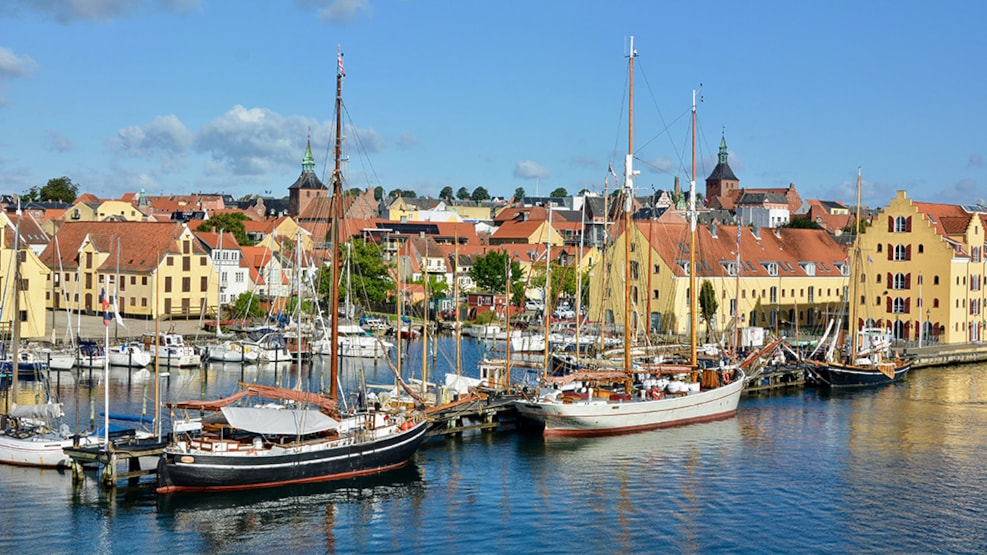
Geopark: Svendborg Harbour
Svendborg grew out of a deep bay in Svendborg Sound
The bay in Svendborgsund formed an almost perfectly protected natural harbor and was the natural crossing point between Funen and Tåsinge.
Today, the harbor is home to maritime and other businesses, leisure sailors and cultural life and is a cornerstone of local identity. In 2007, the Port of Svendborg was designated by the Danish Agency for Culture as one of Denmark's best preserved commercial harbors.
The development of the Port of Svendborg primarily took place in the last quarter of the 19th century. Before that time, the market town's harbor was limited to a small paved square at the end of Brogade and the surrounding bay was surrounded by a handful of private "merchant ports".
The harbor square has a number of fine buildings, warehouses, hotels and a harbor master's residence from the period 1830-1876. South of the harbor square you will find the listed Baagøe & Ribers grocery store with old grain warehouses and timber barns, the ferry berth for the defunct Vindeby crossing (site C6) and, at the far end, the round marina from 1935.
With the arrival of the railroad to Svendborg in 1876, the first section of a modern harbor, Jessens Mole, opened with a steamship quay, customs booth, agent and brokerage offices and other maritime services. In 1893, the next section, North Quay, opened, including coal berths, and in 1901 the last section, East Quay, opened with new grain and feed warehouses. Behind the new bulwarks, large areas of new land were reclaimed, and between 1876 and 1970, the city's industrial companies were located here, close to ships and railways. Since 1970, industry has been phasing out at the harbor. It is being replaced by offices, exclusive apartment buildings and, in 2023, a new campus for 1,000 maritime students will be ready.
Between Havnepladsen and Jessens Mole, a bridge from 1920 leads to Frederiksøen. The island was originally a sandbank that was fortified during the 19th century and eventually filled in to form a large man-made island with shipyards, workshops and slipways built to build and maintain wooden and later steel ships. The well-known and renowned Ring-Andersens Træskibsværft was established on Frederiksøen in 1867. The company is still going strong, run by the fourth generation Ring-Andersen. In 1917, A/S Svendborg Stålskibsværft was founded, which over time became the city's largest workplace. The shipyard closed in 2001 and after a few years of wind turbine industry, the abandoned industrial buildings have been given new life as an event venue and cultural experimentarium.
The east side of Frederiksøen is still home to a number of maritime companies, including Svendborg Bugser and the repair yard Petersen & Sørensen, which has two floating docks and contributes greatly to maintaining Svendborg Harbour as the commercial port praised by the Danish Agency for Culture in 2007.